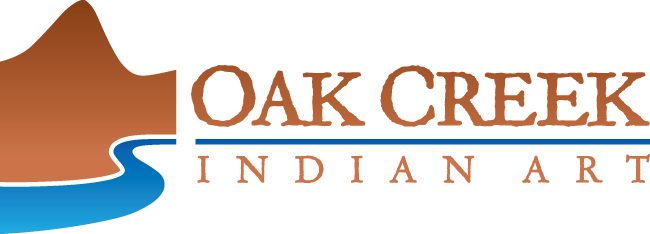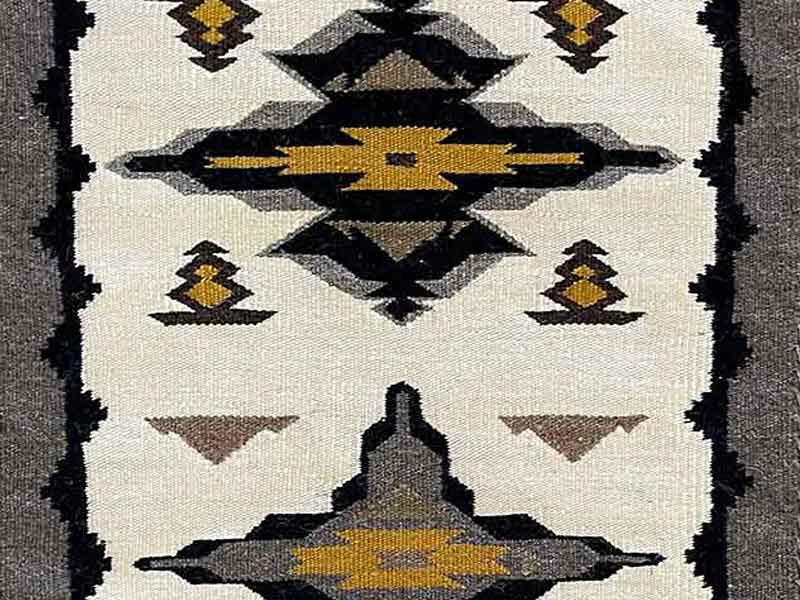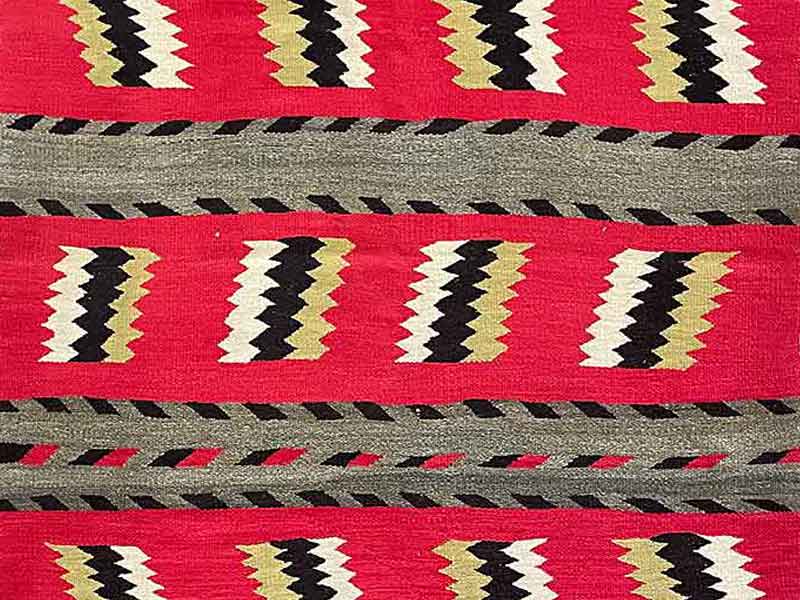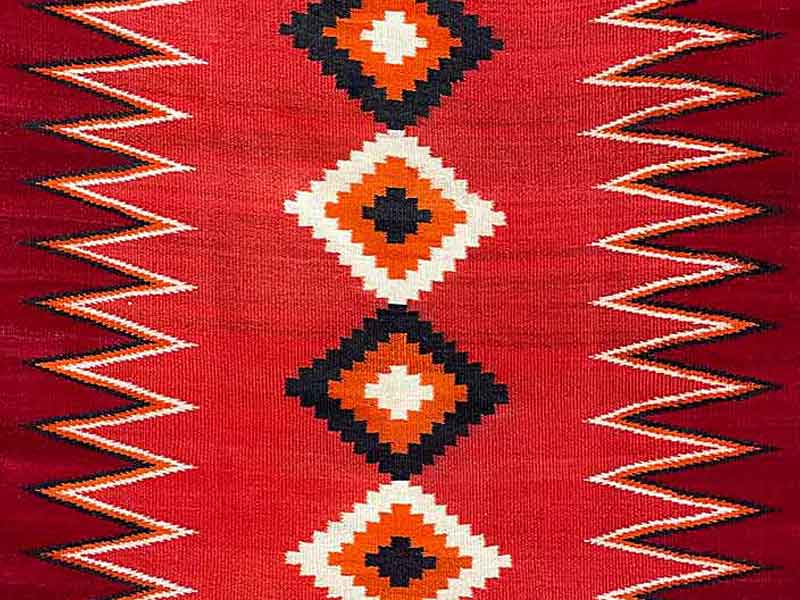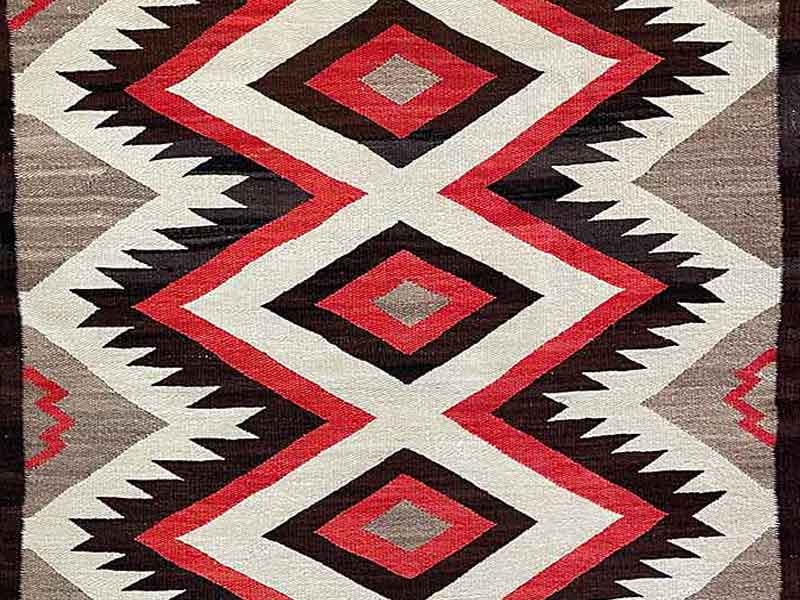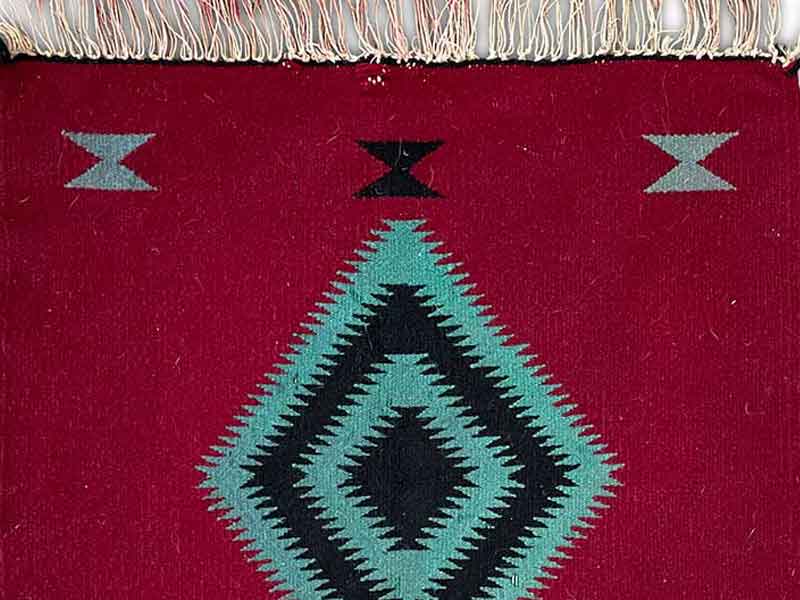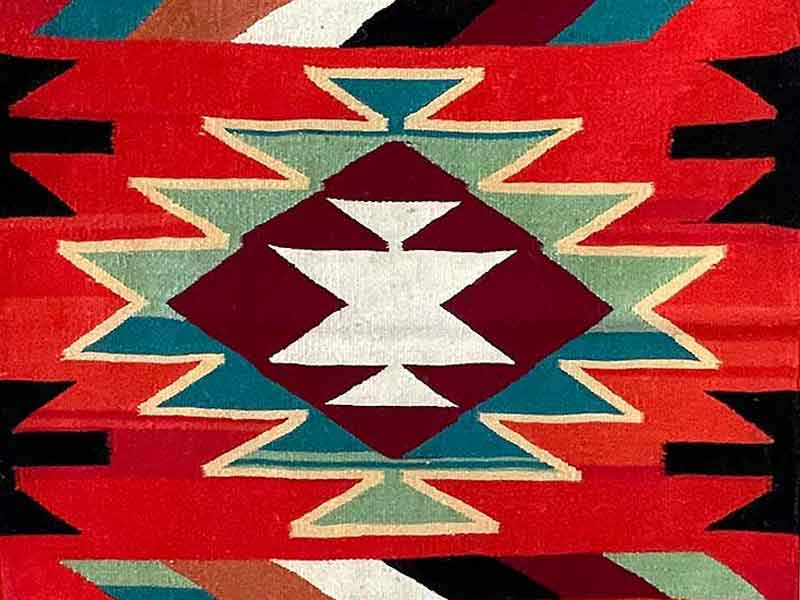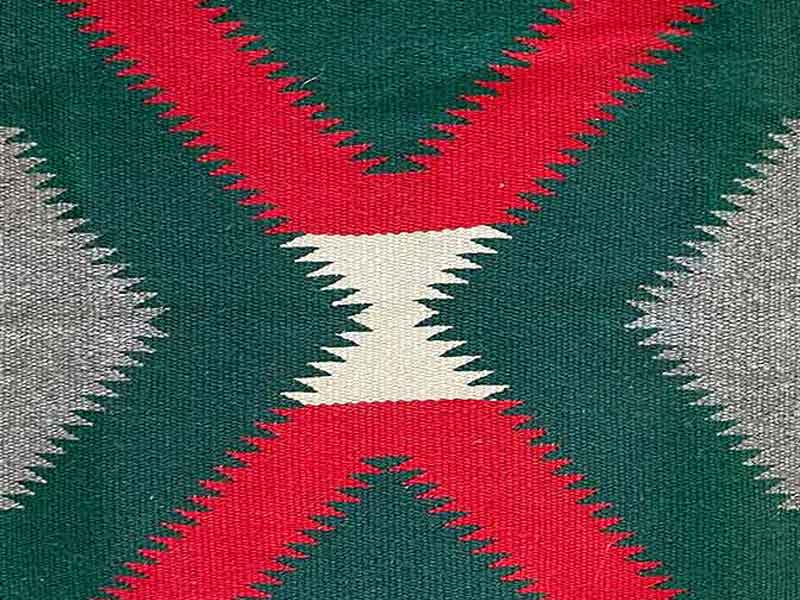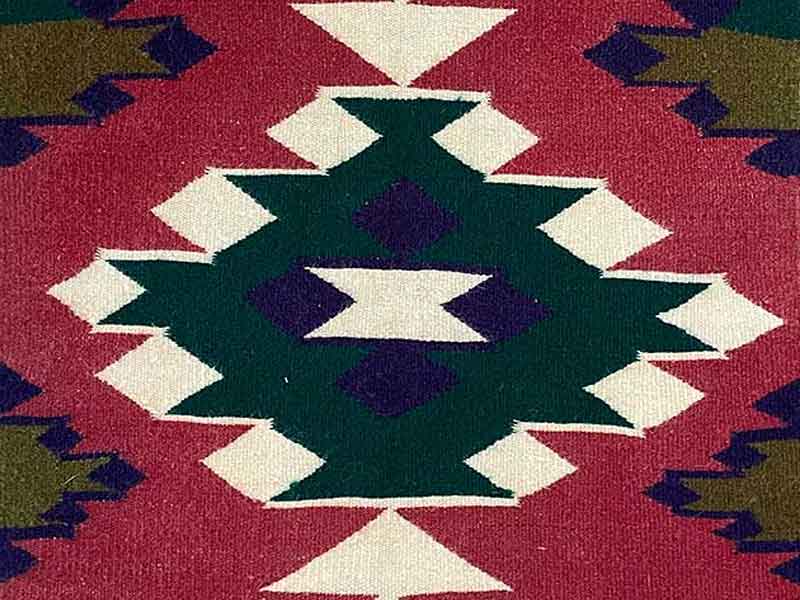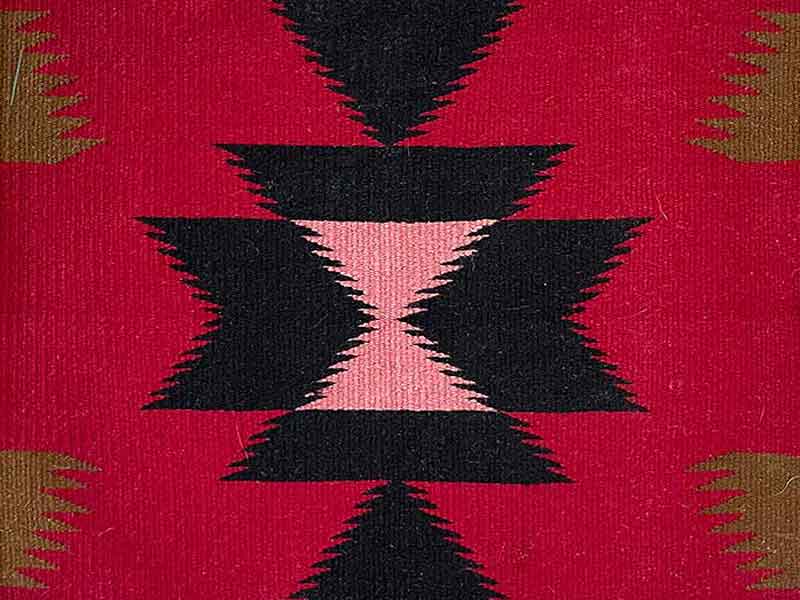Regional Rugs
Blankets
Transitional
Germantown Samplers
From Garlands Navajo Rugs – Sedona Arizona
Germantown weavings
Until the introduction of railroads and trading posts, all Navajo weaving was done with homespun wool yarn. Colors were limited to natural wool colors and local vegetal dyes. Some early blanket weavings occasionally included Indigo and Cochineal dyes. Beginning in 1870 to 1875, the Navajo weavers began to have access to commercially spun and dyed wool yarns. The earliest were often three ply yarns, which is one method of dating older weavings. After 1875 the yarns were mostly 4 ply and provided by the early traders to some of their better weavers. The majority of these commercial wool yarns were produced at the mills at Germantown, Pennsylvania. They were sent out by train to these early trading posts on the reservation. This introduction of colorful yarns, never before seen by the Navajos, caused a dramatic shift in Navajo weaving- and we see an explosion of colorful, eye-dazzling designs during this period.
Many of the weavers using the Germantown yarns did not bother to hand card and hand spin their own wool for the foundation threads (or warp). Thus the early traders occasionally provided balls of cotton threads for the weavers’ use as warp material. Many of these weavings were shipped back East and put into service as floor weavings. They may have gotten damp and cotton can rot; and in general was not as strong as the “all wool” weavings that the Navajos were famous for. This is only a theory, but for some reason the commercial yarn weavings fell out of favor and the demand dropped sharply. The traders pulled the rest of the commercial yarns off their shelves around 1900 and encouraged the weavers to return to their hand carded, hand spun wool. Thus this gives a unique historical niche to Germantown yarn weavings. To own a Germantown weaving puts it in the 1875 to 1900 era, although most were made from 1885 to 1900. The weavings have a distinct feel, often slick and shiny with bright early aniline dyed coloration. Designs varied from Classic Blanket designs to the colorful Eyedazzlers.
